Think about the last time you chose a product just because you trusted the brand behind it.
Maybe it was a coffee shop you always go back to or a pair of shoes you keep rebuying because they feel right.
That’s the power of branding.
It builds trust, sparks emotion, and creates loyalty that numbers can’t always explain—but the stats in this article come pretty close.
From design choices to personal branding and beyond, these branding stats show why branding still matters more than ever in a world full of options.
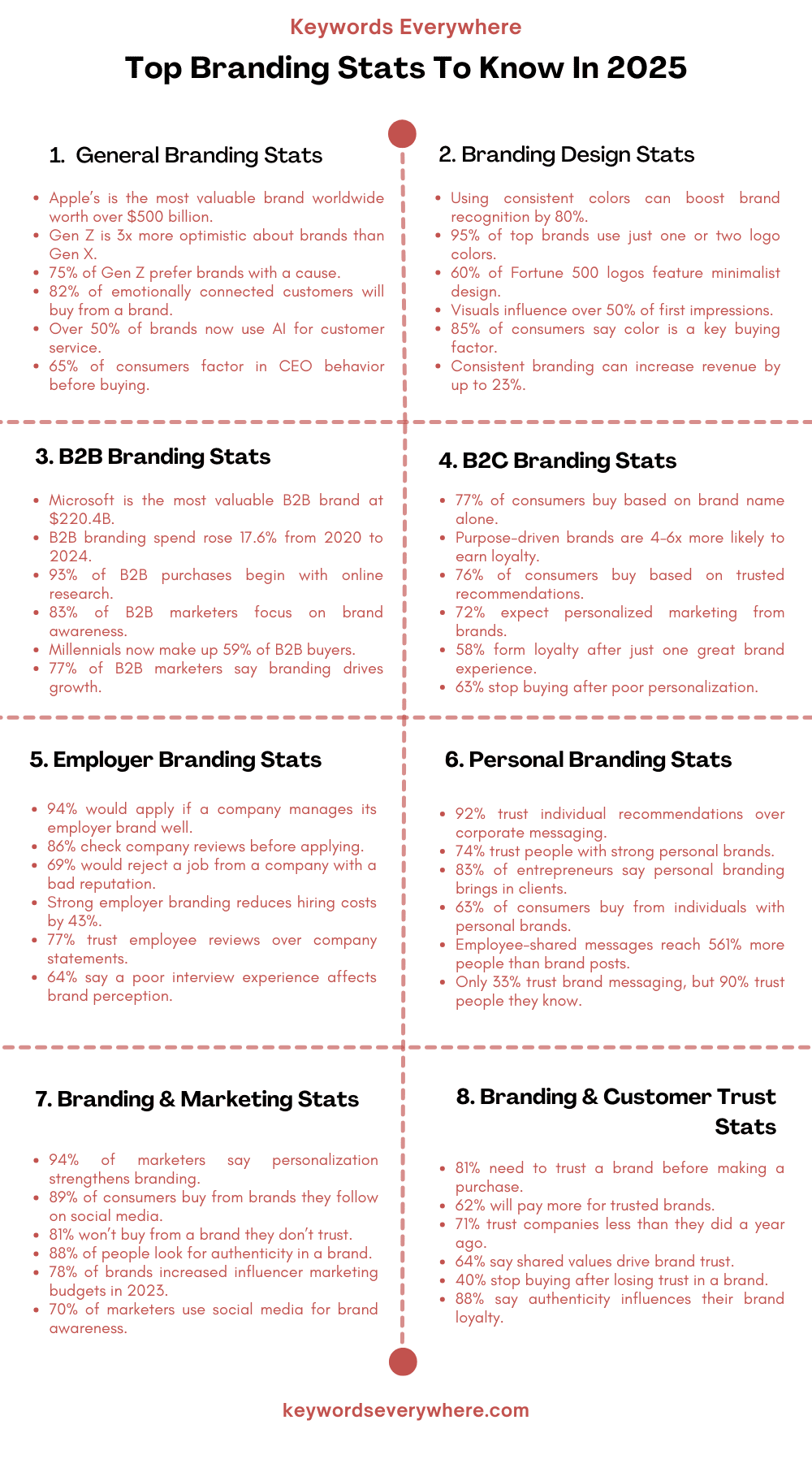
General Branding Statistics
Branding has become one of the most important parts of running a business today, and these general branding stats show just how much it influences everything from customer choices to long-term success in both small startups and big companies:
1. Apple is the most valuable brand in the world, with a market value close to $3 trillion. Its name and logo are worth over $500 billion, which is more than the entire brand value of both Microsoft and Google combined.
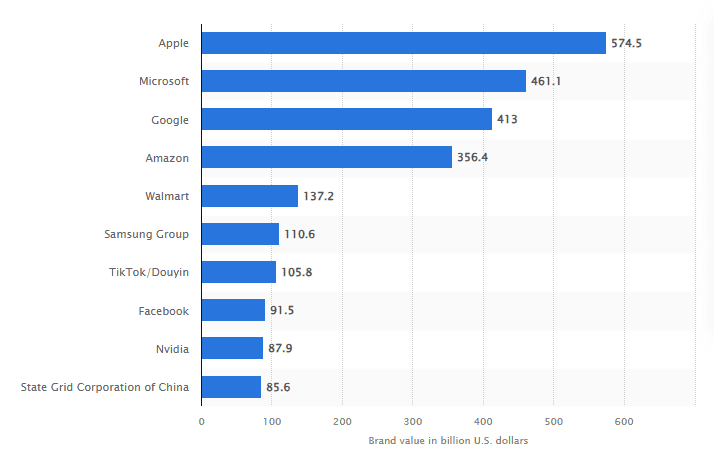
Most valuable brands in 2025
2. Tech leads the world when it comes to brand value, with tech companies holding a combined value of $1.3 trillion. Retail comes in second and recently passed the $1 trillion mark in 2022.
3. Car brands often trip people up online. Hyundai is misspelled around 605,000 times each month, Lamborghini gets about 365,000 misspellings, and Ferrari isn’t far behind with 123,000 monthly mix-ups.

Most misspelled brands
4. Gen Z is much more hopeful about brands—they’re twice as likely as millennials and 3x as likely as Gen X to believe that brands can help make the world a better place.
5. Three out of four Gen Z shoppers say they like to buy from brands that stand for something bigger than just selling products.
6. Consumers feel closer to brands when they see the people behind them—70% say they feel more connected when the CEO is active on social media.
7. 65% of people say the behavior of a brand’s CEO and employees can directly affect whether they choose to buy from them or not.
8. When people feel emotionally connected to a brand, they’re much more likely to buy. About 82% of those with a strong emotional bond make a purchase, compared to just 38% without that connection.
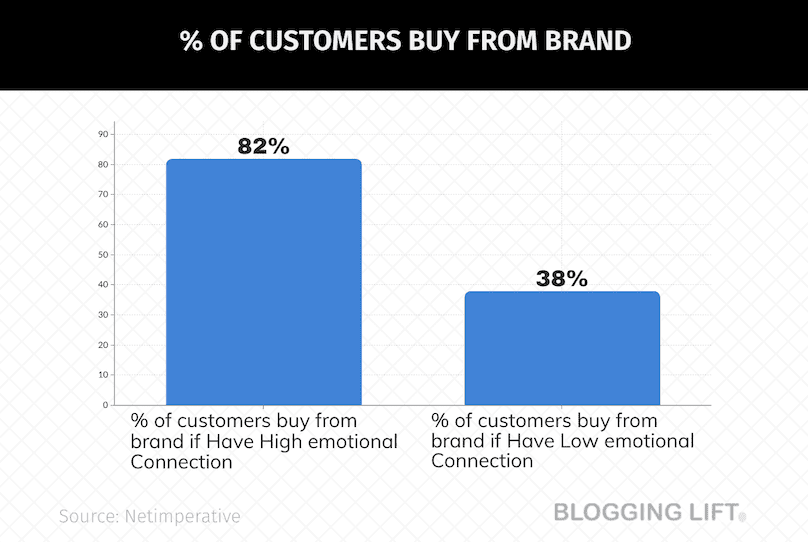
Percentage of customers who buy from brand due to strong emotional connection
9. More than half of brands now use chatbots or AI tools to handle customer conversations, especially on websites and apps.
10. Over 73% of people say they’re fine with brands using AI if it means getting quicker service on social platforms.
11. Even though brand rivalries can be fun to watch, two out of three people say it’s annoying when brands publicly make fun of each other.
12. According to Keywords Everywhere, a high number of people search for brands and their products online. For instance, Tesla has a monthly search volume of 11.1 million.
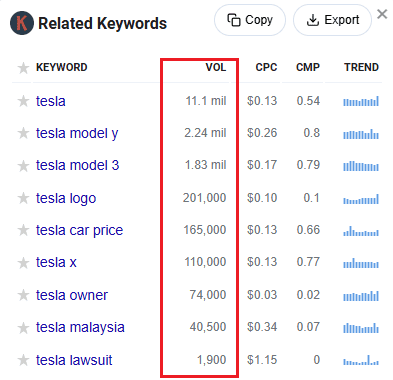
Branding Design Statistics
Design is one of the most powerful tools a brand can use, and these branding stats show just how quickly people make decisions based on visual elements like color, font, and layout.
A well-designed brand isn’t just pretty to look at—it builds recognition, sparks trust, and can leave a lasting impression before a single word is even read.
13. Over half of the first impressions people form about a brand come just from how it looks, which shows how much visual design matters when it comes to grabbing customer attention.
14. Using the same colors across all brand materials can boost how easily people recognize your brand by up to 80%.
15. 95% of leading 100 brands keep their logos simple by using just one or two colors, showing that sometimes less really is more when it comes to building a strong and unforgettable identity.
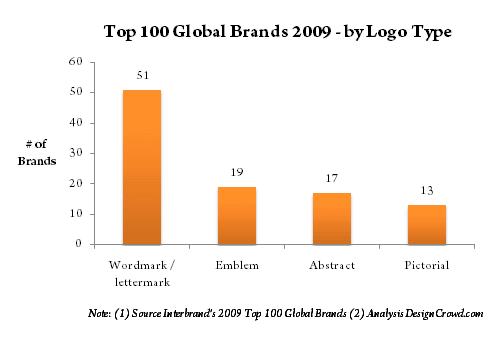
Global brands keep logos simple
16. Roughly 60% of today’s biggest brands have moved toward minimalist logos, meaning they focus on clean, simple designs that are easier to recognize and remember.
17. Around 45% of people expect a brand’s designs—whether it’s a brochure, a website, or an ad—to look amazing.
18. Keeping your brand’s visuals and messaging consistent across different platforms can help increase your revenue by up to 23%.
19. 74% of surveyed online marketers stated they employed visuals in their content more than 70% of the time, highlighting the dominance of visual content in marketing strategies.
20. 60% of Fortune 500 companies use a logo combining text and imagery, which shows that using both words and visuals together is a popular and effective way to make your brand easier to understand and remember.

Types of logo Fortune 500 companies use
21. Videos get shared more than 12 times as often as text and images combined, which makes them one of the most powerful tools for spreading your brand’s message.
22. Color isn’t just about looks—it helps people decide what to buy, with 85% of shoppers saying that color plays a big role in their purchasing choices.
23. Almost three out of four people say that bad typography makes a brand seem less trustworthy, proving that even small design choices like fonts can greatly impact how people feel about your business.
Branding and Marketing Statistics
Branding and marketing work hand in hand, and the right brand identity can make marketing messages more effective, more memorable, and more likely to lead to action.
These branding stats highlight how a strong brand improves everything from ad performance to customer engagement, proving that marketing without a clear brand can fall flat no matter the budget.
24. Most marketers strongly believe that personalized marketing helps build a better brand, with 94% saying that tailoring messages to individual customers creates stronger connections and improves overall brand impact.
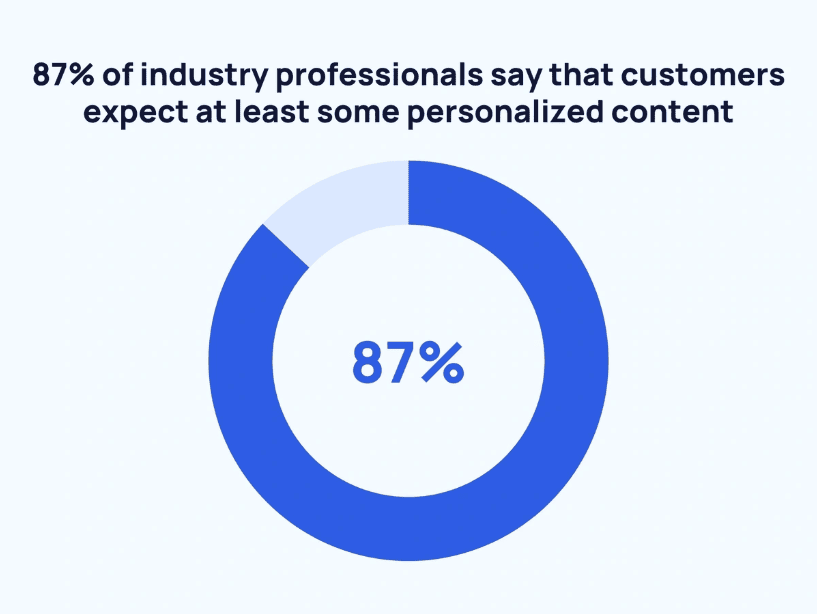
Customers expect personalized content
25. 89% of shoppers are likely to buy from a brand they follow on social platforms, and 84% would choose that brand over a competitor.
26. 81% of shoppers need to trust a brand before making any purchase, highlighting the importance of authenticity and transparency.
27. 63% of customers are willing to pay a premium to purchase from brands they are loyal to. That’s exactly why you need to build strong customer relationships.
28. When it comes to social media, building brand awareness is still the main goal, with 70% of brand marketers saying it’s their top priority.

Top priorities of B2B vs. B2C marketers
29. Brands that maintain consistent messaging and visuals across all platforms can boost revenue by up to 23%.
30. 88% of consumers say authenticity is a main factor when deciding which brands they like and support.
31. 78% of brands increased their budgets for influencer marketing in 2023, recognizing its effectiveness in reaching target audiences.
32. Consistent messaging across all platforms can do more than just look good—it can grow your business, as 32% of professionals say keeping brand messaging consistent helped boost their revenue by more than 20%.

Impact of brand consistency on revenue
Employer Branding Statistics
A strong brand doesn’t just attract customers—it also brings in talent.
In a world where people have more options than ever, businesses that invest in employer branding are seeing better hiring results, stronger teams, and higher employee loyalty over time.
These employer branding stats show how much job seekers care about a company’s values, image, and reputation.
33. 94% of job applicants are more likely to apply if a company actively manages its employer brand.
34. 86% of job candidates read company reviews and ratings before deciding where to apply.
35. 77% of job seekers are influenced by company reviews from current or former employees.
36. 69% of job candidates would reject a job offer from any company with a bad reputation, even if they were unemployed.

Chances of accepting job offer by a company with bad reputation
37. Companies with a strong employer brand see about a 43% decrease in cost per hire and experience 28% less employee turnover.
38. 72% of recruiting leaders globally agree that employer branding has a significant impact on hiring.
39. 78% of companies believe employer branding is a critical strategy to remain competitive during economic slowdowns.
40. 64% of applicants say that a bad interview experience would make them less likely to purchase a company’s products or services.
41. 75% of Generation Z individuals seek secure and stable work, preferring long-term employment with the same employer.

What Gen Z job seekers want from employers
B2B Branding Statistics
Many think branding only matters to consumers, but in the B2B world, a strong brand can be just as valuable.
These B2B branding stats reveal how decision-makers trust well-branded companies more, respond better to consistent messaging, and often base major buying choices on how a business presents itself—proving that branding is just as crucial in the boardroom as in the store.
42. In 2024, Microsoft was the most valuable B2B brand worldwide, with a brand value of $220.4 billion.
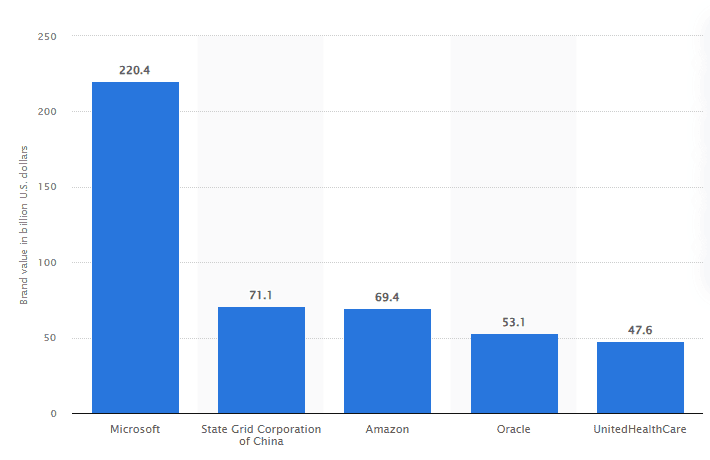
Most valuable business-to-business brands in 2024
43. The top 100 most valuable B2B brands accounted for a combined brand value of $2.25 trillion in 2024.
44. In 2024, 20% of B2B marketing spending was allocated to branding, representing a 17.6% increase from 2020.
45. In the United States, B2B advertising and marketing spending reached $59.5 billion in 2024, with $18.3 billion allocated to digital advertising.
46. 77% of B2B marketers stated that building a strong brand is key to their company’s growth.
47. 83% of B2B marketers identified creating brand awareness as their top content marketing goal.
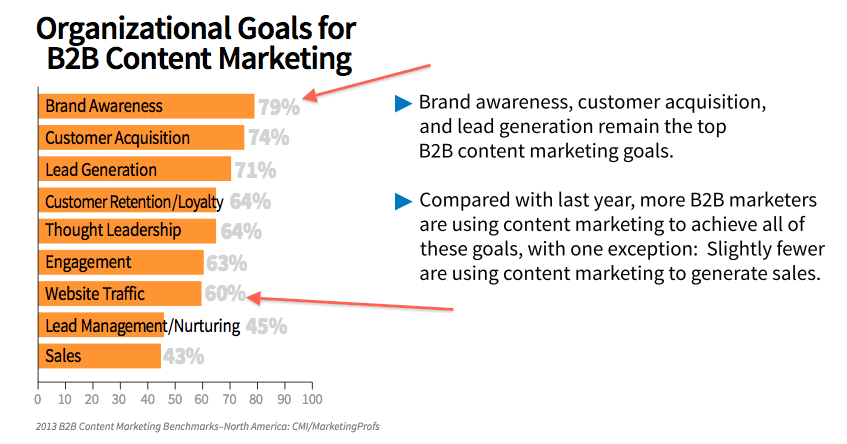
Organizational goals for B2B content marketing
48. B2B buyers do an average of 12 online searches before visiting a brand’s website.
49. 93% of B2B buyers begin their purchasing process with an online search.
50. 59% of B2B buyers are millennials, indicating a generational shift in the B2B purchasing landscape.
51. In 2024, 35% of B2B firms anticipated a rise in online sales, reflecting ongoing digital transformation in the B2B sector.
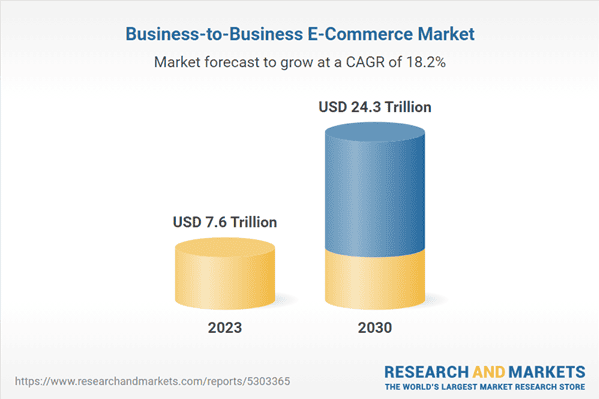
B2B e-commerce market growth forecast
B2C Branding Statistics
For consumer-facing brands, identity and image are everything.
These B2C branding stats show how people choose products based on how brands make them feel, what they stand for, and whether they seem trustworthy.
In a crowded market full of similar products, the right branding can be the key to earning a loyal customer—and keeping them.
52. 77% of B2C consumers are likely to make purchases based on a brand name.
53. B2C customers are 4 to 6 times more likely to shop from and advocate for purpose-driven brands.
54. 62% of B2C consumers are likely to click ads, social posts, and emails that feature customer photos rather than any image created by the brand.
55. 76% of B2C customers have bought a product based on someone else’s recommendation.
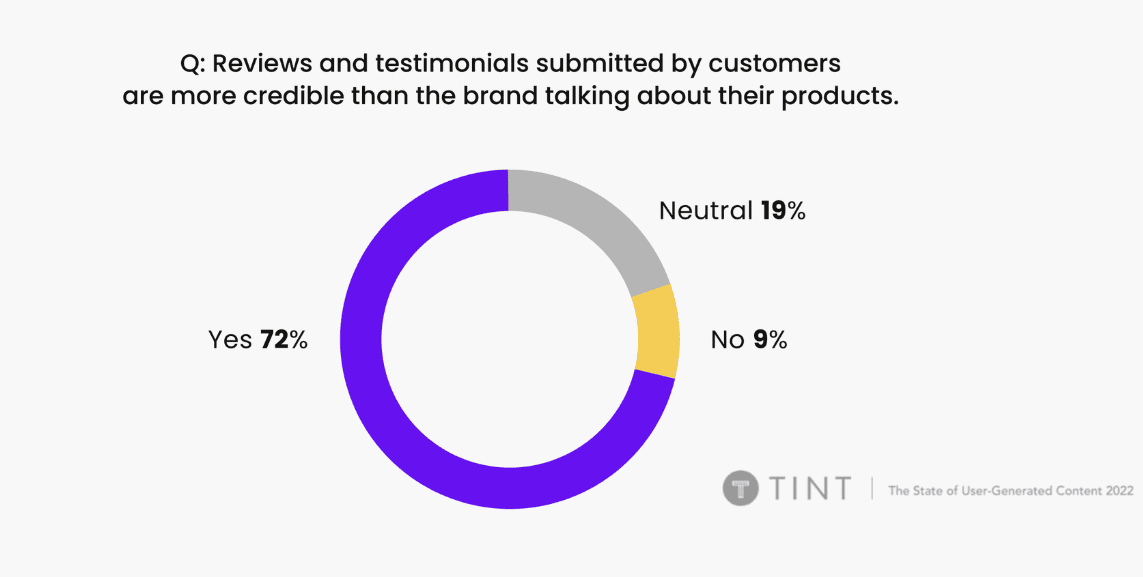
The importance of user-generated content
56. 72% of consumers say they only engage with marketing messages that are tailored to their different interests.
57. 63% of consumers stop buying products and services from firms that provide poorly executed personalization.
58. 48% of consumers state that they are more likely to be loyal to a brand during the first purchase/experience.
59. 59% of buyers would wait for products to return to stock at their favorite brand’s store or site rather than shopping somewhere else.
60. It takes an average of 5-7 brand impressions before someone remembers a brand.

What it takes to remember a brand
Personal Branding Statistics
Personal branding has become a powerful tool in today’s digital world, where your online presence can shape how people see you both personally and professionally.
These branding stats show how individuals are building brands to grow their careers, build trust, and stand out in crowded spaces:
61. 92% of people trust recommendations from other individuals, even if they don’t know them, over companies.
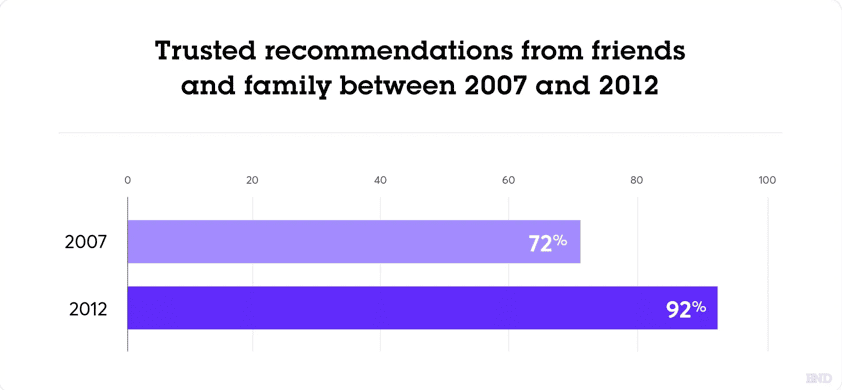
Trusted recommendations from friends and family
62. 74% of American buyers are more likely to trust someone with a respected personal brand.
63. 63% of Americans are likely to shop from a person who has built a personal brand.
64. 83% of business owners say building a strong personal brand has helped them gain new clients and grow their business.
65. When employees on social media share brand messages, they get about 561% more reach than the same texts shared by the brand’s social media channels.
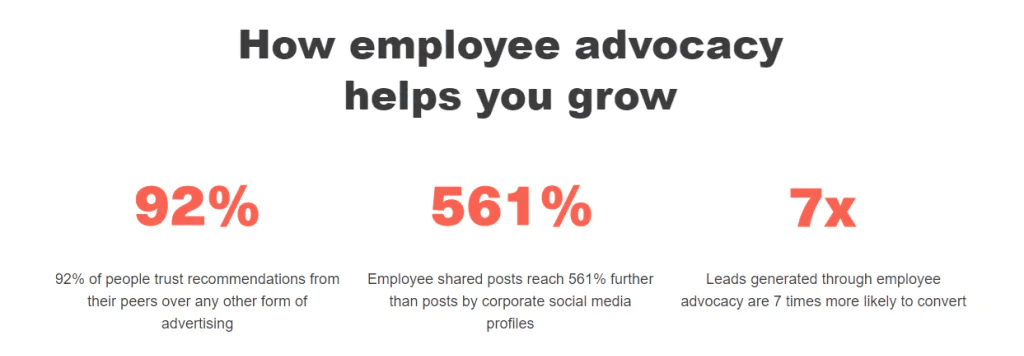
How employee advocacy helps you grow
66. Only 33% of shoppers trust messages from a company, while 90% of customers trust recommendations from someone they know.
67. 77% of all discussions on social media are of people seeking advice, information, or help, which is more easily addressed by individuals than companies.
68. 68% of people enjoy spending time reading about brands they find interesting.
Branding and Customer Trust Statistics
Trust is something every brand needs to earn, not just once, but over time—and these branding stats make it clear how big of a role branding plays in that.
Whether it’s consistency in messaging or honesty in actions, a brand that people trust is more likely to see long-term success, stronger customer loyalty, and fewer losses when things go wrong.
69. 81% of shoppers need to trust a brand to consider purchasing from it.

Importance of earning consumer trust
70. 62% of buyers will pay more for an identical product from a brand that has gained their trust.
71. 71% of global consumers agreed with the statement, “I trust companies less than I did a year ago.”
72. 64% of consumers report that having shared values helps create trusted relationships with brands.
73. 53% of buyers will recommend a brand they fully trust to others.
74. 40% of consumers have stopped purchasing from a brand they love due to a lack of trust in the parent company.
75. 83% of individuals would lose trust in a brand after finding out its content is written by ghostwriters.
76. Customers are more than twice as likely to shop first, stay loyal, and advocate for brands they trust.
77. 88% of consumers say authenticity plays a pivotal role when choosing the brands to support.

Authenticity is important for brands
Conclusion
That wraps up our deep dive into the latest branding statistics. The numbers make one thing clear—branding is no longer just a logo or a trendy slogan.
It’s the full experience, the emotional connection, and the trust that companies build through every interaction, post, and campaign.
Consumers today expect brands to show up consistently, speak honestly, and stand for something real. From design to marketing to leadership, every detail shapes how people feel about a brand.
In 2025 and beyond, those who succeed won’t just be selling products—they’ll be building relationships that last.


